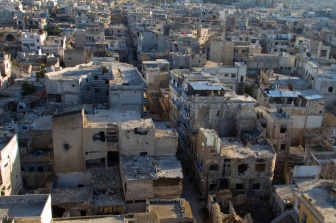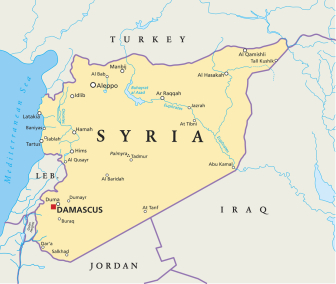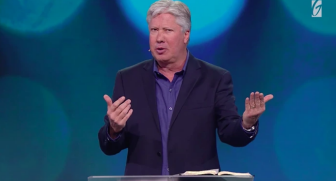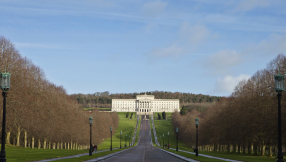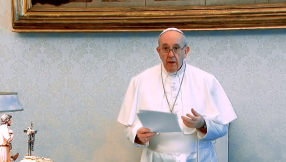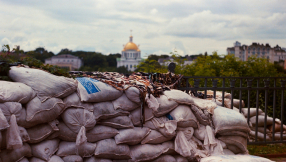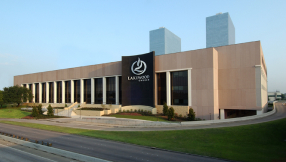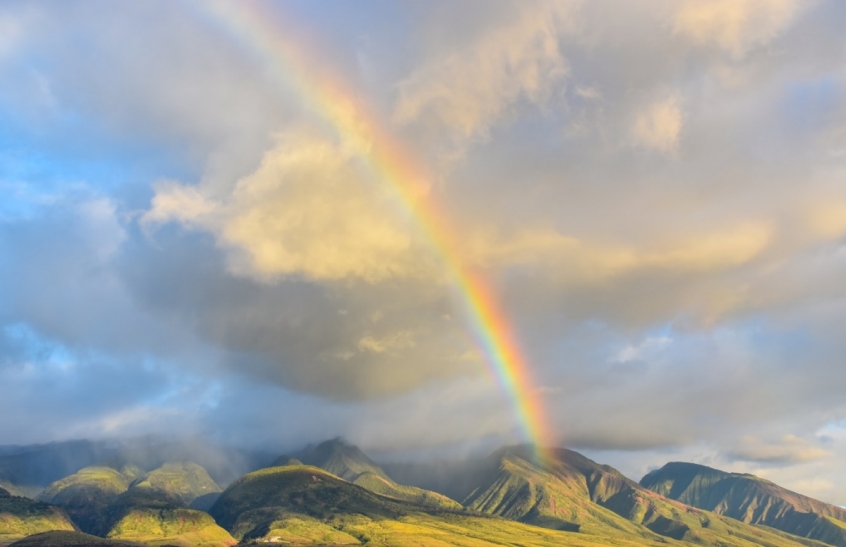
There are a lot of rainbows around at the moment – hanging from windows, chalked on walls and fluttering from flagpoles. Some people have hung them to celebrate solidarity with the LGBTQ+ movement while others to show their support for the NHS. I gather the former use a rainbow with six colours and the latter with seven, but there are probably many people waving the wrong flag! The rainbow symbol has been used to show support for many things and there is a rainbow of claimants to the ownership of the rainbow symbol and no one has the monopoly on it.
It is not surprising that lots of people identify with the rainbow image. I marvel not just at the beauty of the rainbow but of its extraordinary simplicity. I think it's typical of God's ingenuity to produce something so glorious from just light and water droplets.
Thinking about what an image of a rainbow can mean reminds me that what is almost certainly the oldest use of the rainbow as a symbol occurs at the very start of the Bible, where it's God who uses it. In Genesis chapter 9, after the catastrophic judgement of the great flood, God announces to the survivors – Noah and his family – that from now on he will make a covenant (a promise) with humanity and all living creatures. From now on the judgement of the flood will never be repeated and a perpetual reminder of this covenant will be the rainbow. Given that rainbows are common as heavy rain is stopping, this is particularly appropriate after the 'Mother of Storms' of the flood.
Something that we possibly overlook in our modern age is the linkage between the rainbow and peace. The name 'rain-bow' in English and in the Old Testament's Hebrew refers to the fact that its shape is that of a bow, the great weapon of war in ancient times. To see the rainbow was to be reminded that, after judging the evil of humanity in the flood, God had now 'hung up his bow'. The great arc of the rainbow symbolises peace.
Here we see a difference between our use of the rainbow as a symbol and God's use of it. We adopt the rainbow symbol to display our support and our solidarity with others. God uses the rainbow to speak of his offer of forgiveness, peace and hope for the world beneath him.
So why don't Christians use the symbolism of the rainbow more often? The Bible rarely uses imagery of the rainbow, although, like so many of the themes in the first few chapters of Genesis, it returns in the book of Revelation (4:3 and 10:1). The main reason is that the covenant with Noah and his descendants that is associated with the sign of the rainbow is only the first of several covenants in the Bible in which God progressively proclaims ever greater love, forgiveness and commitment towards the human race. The final one of these covenants is that which is fulfilled and sealed in the death of Jesus. The rainbow tells the beginning of the story of God's love, but not its conclusion.
Here I think we have the actual reason why the Bible – and Christians since – have neglected the rainbow symbol. The rainbow is wonderful, weightless and hangs high over the earth; a tantalising phenomenon that we can never reach, touch or hold. There lies the problem. As a symbol for resolving the deepest need of the human race it is just too lightweight, too insubstantial, too inaccessible. The sad fact is that what's wrong with the human race – our deep-rooted, self-centred and rebellious nature – cannot be healed by God simply declaring forgiveness and signing off with a light show. We stand guilty before God and a price must be paid for our forgiveness; something that the Bible tells us God in Jesus did that first Easter.
At the end of the day, the luminous beauty of a rainbow high in the sky is inadequate to represent how God rescues us. As a symbolic reminder of what truly saves us, we need something much more accessible and down-to-earth; we need the cross. Take away the cross of Christ and the Bible is a dark book. The cross was a one-time visual representation of God's love for us.
I would like to finish this article with the words to the hymn 'The Old Rugged Cross'.
On a hill far away stood an old rugged cross, The emblem of suffering and shame; And I love that old cross where the dearest and best For a world of lost sinners was slain.
Refrain: So I'll cherish the old rugged cross, Till my trophies at last I lay down; I will cling to the old rugged cross, And exchange it some day for a crown.
Oh, that old rugged cross, so despised by the world, Has a wondrous attraction for me; For the dear Lamb of God left his glory above To bear it to dark Calvary.
Refrain: So I'll cherish the old rugged cross, Till my trophies at last I lay down; I will cling to the old rugged cross, And exchange it some day for a crown.
In that old rugged cross, stained with blood so divine, A wondrous beauty I see, For 'twas on that old cross Jesus suffered and died, To pardon and sanctify me.
Refrain: So I'll cherish the old rugged cross, Till my trophies at last I lay down; I will cling to the old rugged cross, And exchange it some day for a crown.
To the old rugged cross I will ever be true; Its shame and reproach gladly bear; Then he'll call me some day to my home far away, Where his glory forever I'll share.
Refrain: So I'll cherish the old rugged cross, Till my trophies at last I lay down; I will cling to the old rugged cross, And exchange it some day for a crown.
Great to have the rainbow but cling to the cross of Jesus for forgiveness, healing, peace and hope.
Grace and Peace
Rev Canon J John is an evangelist and the director of the Philo Trust. Find him online at www.canonjjohn.com

